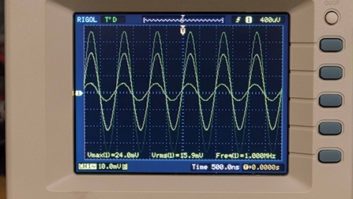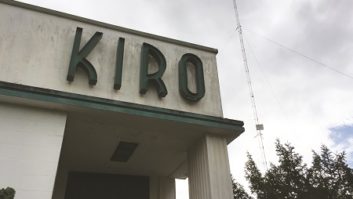
credit: Image courtesy nist.gov A few years ago, cheap “atomic clocks” flooded the market. Now it’s possible for anyone with thirty bucks to own a simple LCD clock that has high precision, is visible across a room, and displays seconds — all things that are very useful to radio broadcasters!
While none of these clocks contain radioactive materials, the name is meant to invoke the accuracy of a laboratory standard clock.
However, these clocks’ precision relies on regular, daily reception of a radio signal from the WWVB transmitter in Fort Collins, Colo. And some folks find that no matter what they try, they can’t seem to reliably receive that signal. Accordingly, the clock’s time starts to drift, sometimes by as much as 10 seconds per week. For time-sensitive radio networks, that’s unacceptable. So today, we’ll talk a bit about how you can better improve your WWVB reception, and keep your clocks “on time.”
First, you must understand that WWVB transmits in the “Low Frequency” band, specifically at 60 kHz. Like any LF transmission, it propagates much farther after dark. Ideally, you’ll time your efforts to synchronize when it’s at least an hour after sunset both at your location and at all locations between you and Fort Collins (it’s near Denver). For areas on the East Coast of the U.S., this is a practical necessity.

You can download this booklet from the NIST WWVB website. You’ll want to locate the clock as far away as possible from anything that is actively drawing AC power, as it can cause RF interference to the WWVB signal. Things that cause a buzz on an AM radio are prime suspects: dimmers, computers, certain fluorescent lights, etc. This can be tricky in 24/7 operations like radio stations, and doubly so if you’re not sure where the electrical outlet wiring is located in the walls you might be hanging a clock on. Experimentation is the only answer.
Inside every clock is an antenna tuned to 60 kHz, and orienting that antenna properly can improve reception. Hanging the clock on a wall or in a window that faces towards Denver should help.
If nowhere indoors is working, and you have station vehicles that are parked outside, try leaving the clocks on the dashboard every few days.
For more information and a handy signal map, check out the NIST WWVB website: http://1.usa.gov/emdFCG.
Aaron Read is director of engineering at Rhode Island Public Radio.












